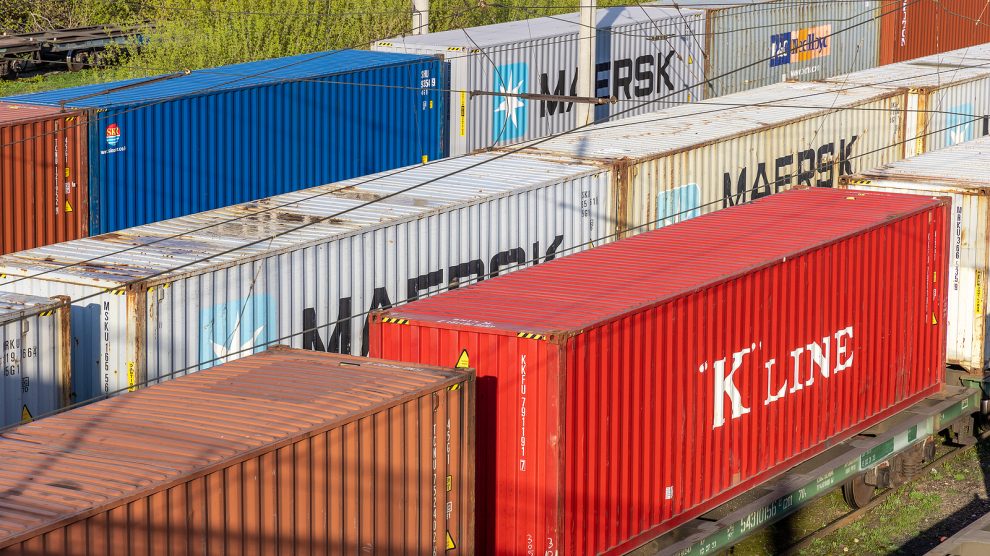Soft connectivity challenges, not hard infrastructure needs, are the greatest challenge to sustainable trade between Europe and Central Asia.
Trade volumes between the European Union and Central Asia have been increasing for years—climbing 38.8 per cent from 2012 to 2022.
Since Russia’s full invasion of Ukraine in February 2022 and subsequent Western sanctions aimed at isolating its economy, global interest in the Trans-Caspian Middle Corridor trade route between China and Europe via Central Asia and the South Caucasus has soared to new heights as Western firms try to avoid relying on Russian rail for insurance and ethical reasons.
As Europe painfully weens itself off of Russian gas, the geographic proximity of Caspian fossil fuel reserves controlled by Azerbaijan, Kazakhstan, and Turkmenistan presents an appealing alternative—while Central Asian critical minerals are poised to play a crucial role in Europe’s green transition.
Middle Corridor traffic increased by 2.5 times last year, reaching 1.5 million tonnes.
- Third time lucky for Georgia’s deep sea port project?
- How the global battle to secure trade routes is impacting the Armenia-Azerbaijan dispute
- Looming Silk Road bottlenecks will need major investment
Despite the hype, trade routes and energy supply chains cannot reconfigure overnight. Middle Corridor countries lack any customs union, joint tariff coordination, or transnational digital integration.
The current infrastructure can only carry five per cent of the volume of trade handled by rail across Russia, and last year’s massive increase in volumes exposed bottlenecks and capacity shortages along the route, increasing transaction costs and preventing the realisation of expected container cargo growth.
This moment, however, presents all parties involved with the opportunity to design and build new infrastructure in the most sustainable manner possible that will last decades.
A new study on sustainable transport connections between Europe and Central Asia, conducted by the European Bank for Reconstruction and Development (EBRD) and led and funded by the European Union , identified the Central Trans-Caspian Network (CTCN) through southern Kazakhstan as the most sustainable route and proposed specific soft connectivity measures and hard infrastructure investments to develop the route.
Route sustainability
The Middle Corridor itself has several routes: a northern route through the north of Kazakhstan, a central route (CTCN) along Kazakhstan’s southern border with its neighbours, and a southern route through Kyrgyzstan, Uzbekistan, and Turkmenistan.
Once at a Kazakh or Turkmen Caspian Sea port, all three routes continue across the Caspian to the Port of Baku, then onwards overland to Georgia. From Georgia, cargo can either be shipped from across the Black Sea to Bulgaria or Romania or it can continue overland to Europe via Turkey.
The EBRD study assessed each of these three routes for traffic, infrastructure, social and environmental factors, country-specific concerns, and economic integration to determine their sustainability.
“With its two-layer catchment area—300 kilometres to the north and south of the CTCN—the CTCN spans all major economic and population centres in Central Asia and ensures connectivity within the region and with Europe through key transport network links,” the report finds. “The CTCN is a system of infrastructure assets that can bring significant benefits to domestic, regional and intercontinental users.”
“With its cross-country linkages through border crossing points and network connections, it [the CTCN] facilitates direct access to major population centres across Central Asia, including four of the most populous five cities in the region (Almaty, Bishkek, Shymkent and Tashkent),” it adds. “The catchment area hosts many key production centres that are conducive to a further boost in regional trade by integrating regional value chains with each other, as well as with Europe.”
Developing the CTCN will ultimately increase prosperity and economic competitiveness on a regional level. Improved border-crossing practices will lower transaction costs and increase user-friendliness, increased connectivity between economic centres will catalyse regional value-chain integration, and stronger regional coordination can unify tariff procedures.

Soft connectivity issues will be key
The development of the CTCN will require investments in both hard infrastructure—rail, roads, ports, and intermodal logistics—and soft connectivity—regulation, digitisation, and services required to maintain the network’s long-term integration and sustainability. The latter may make or break the CTCN’s success, and the study identifies key soft connectivity priorities.
The study recommends developing a formal network management institution with a decision-making body to harmonise regulation and interoperability across the five Central Asian countries. Implementing e-TIR and e-CMR systems can increase the digitisation of transport documents—increasing transparency while reducing errors, corruption, and administration time and thus cost—and enhance paperless cross-border trade.
These changes can go a long way. The study forecasted that in a business-as-usual scenario, transit container volume on the CTCN could increase from 18,000 20-foot equivalent units (TEUs) in 2022 to 130,000 TEUs in 2040, but if investment projects and soft connectivity measures are implemented to achieve a free-flow transit time of 13 days, transit container volume could increase to 865,000 TEUs by 2040 on the CTCN.
If Europe plays a constructive role supporting and investing in the development of hard and soft infrastructure, both it and Central Asia have much to gain.
Unlike many news and information platforms, Emerging Europe is free to read, and always will be. There is no paywall here. We are independent, not affiliated with nor representing any political party or business organisation. We want the very best for emerging Europe, nothing more, nothing less. Your support will help us continue to spread the word about this amazing region.
You can contribute here. Thank you.







Add Comment